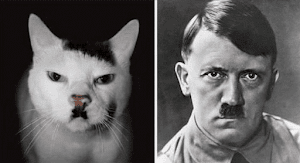The Catmobile - a new
type of veterinary care
The UK’s fi rst fully mobile, exclusively feline veterinary
operating theatre was launched in May, bringing
critical care to cats in the South of England
the Cat Doctor, aka Amy Bergs
DVM MRCVS, is the founder of
Surrey and South West London’s
premier feline-only mobile veterinary
practice. “Four years ago, the
dream of running a fully mobile and
truly feline-friendly veterinary practice
came to life when we launched
The Cat Doctor. Now I’m delighted to
unveil a unique development for our
practice in the form of the Catmobile.
We started with an empty shell and by
working with some of the best people
in the business, we have created
a state of the art operating theatre on
wheels. This will enable us to carry
out the highest quality surgical procedures
on your pets, just outside your
front door, in addition to the routine
veterinary care that we have always
provided in your home.
Launched on 21st May this year,
Amy said: “Over 100 of our clients
came out to see it! It was a fabulous
sunny day as well, couldn’t have asked
for a better event. One client even
baked a cake to mark the occasion!”
The Catmobile has two operating
theatres equipped with the latest
technology and monitoring equipment,
as well as heating, electricity, air
conditioning, anaesthetic and dental
equipment. Generally, what you would
expect to fi nd in a conventional veterinary
practice, you will fi nd installed in
the Vauxhall Movano-based Catmobile.
Everything has been designed
specifi cally with cats in mind and has
been awarded Cat Friendly Clinic status
from International Cat Care, along
with accreditation under the Royal College
of Veterinary Surgeons’ Practice
Standards Scheme – a fi rst for any fully
mobile practice.
Amy and her veterinary nurse,
Shreen Haywood RVN, are putting cats
fi rst, avoiding the need for a stressful
visit to the veterinary surgery, despite
them both suffering from the stress of
travel sickness and Amy herself
is actually allergic to cats. Yet
they put these challenges
aside, decide who will drive
each day and pull up outside
their patient’s house
“We perform the surgery right
there, completely eliminating the need
for a stressful car journey to the clinic.
Thanks to the Catmobile, we can now
perform any general surgical procedure
at home - neutering, biopsies
and abdominal surgery as well as
dental scale and polish, with surgical
tooth extractions if required.”
Patients are ensured individually
tailored monitoring throughout their
anaesthetic and recovery
and only one or two operations
are carried out
each day. As soon as
the patients are awake
and can be moved,
they are allowed back
into their own home to
continue their recovery
in comfortable and familiar surroundings.
“This really keeps stress levels to
a minimum and thus aids their recovery.”
Cats are only treated inside The
Catmobile if surgery is required. All
other procedures and tests are carried
out within the patient’s home. Amy
said: “We’ll do it there because that’s
best for the cat, even if it’s harder for
us - I can’t count the number of times
I’ve taken a blood sample while lying
on the fl oor!”
Virginia Grose is one of The Cat
Doctor’s clients and has used many
of their services. ”I was so pleased to
fi nd The Cat Doctor last year when I was seeking the very best of care for
my elderly cat Lily. In the last year of
her life, Amy and her team provided
amazing treatment and support. When
she passed away in February it was in
the comfort and familiarity of her own
home with me by her side. Happily I
have added two new young cats to my
household now and The Cat Doctor
swung into action again for their initial
check up and of course spaying and
microchipping them in the mobile
surgery. The girls had a stress-free
two minute journey to the surgery and
were treated and operated on outside
my house!
“The ‘Catmobile’ is quite simply
the most amazing service and I would
never want to use any other kind of
veterinary treatment other than ‘at
home’ - my two girls were bouncing
around literally hours after their
surgery.”
Established in 2013, The Cat Doctor
now provides a full range of veterinary
services for more than 400 cats in the
area covered.





























































